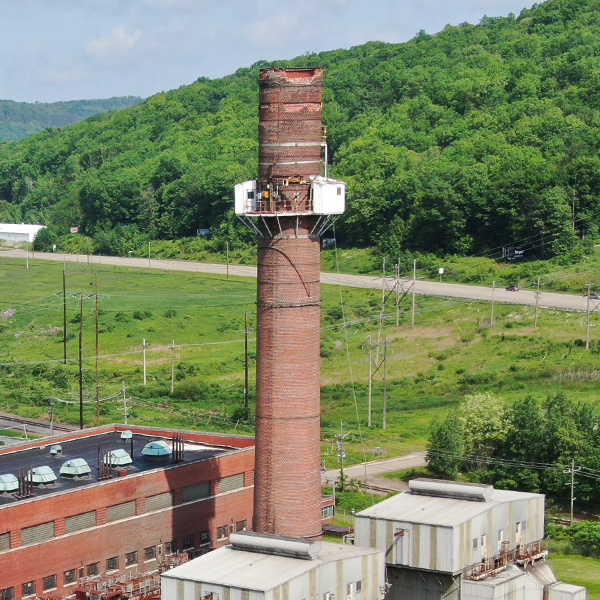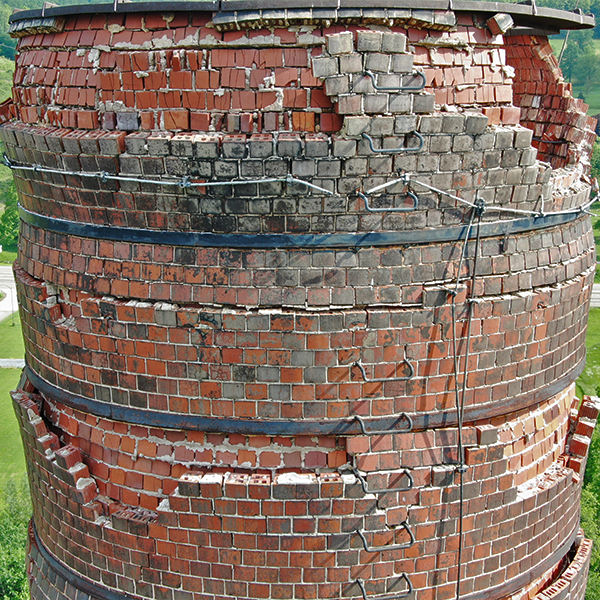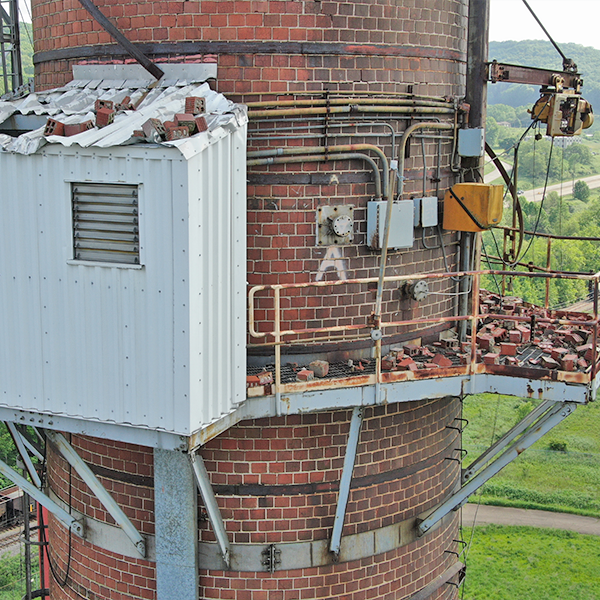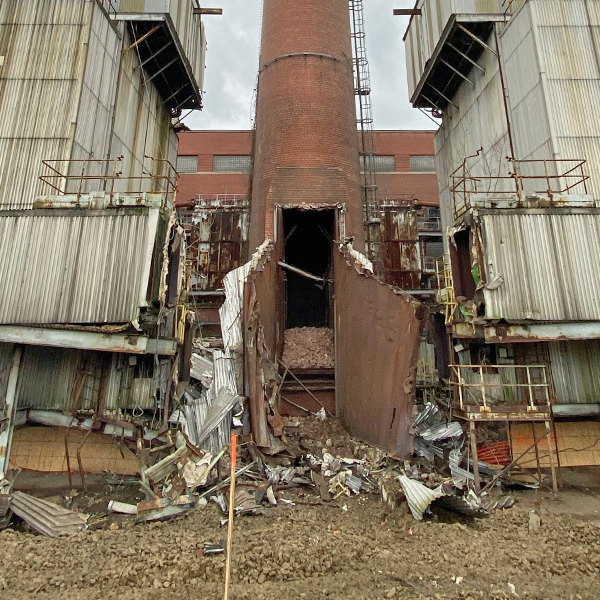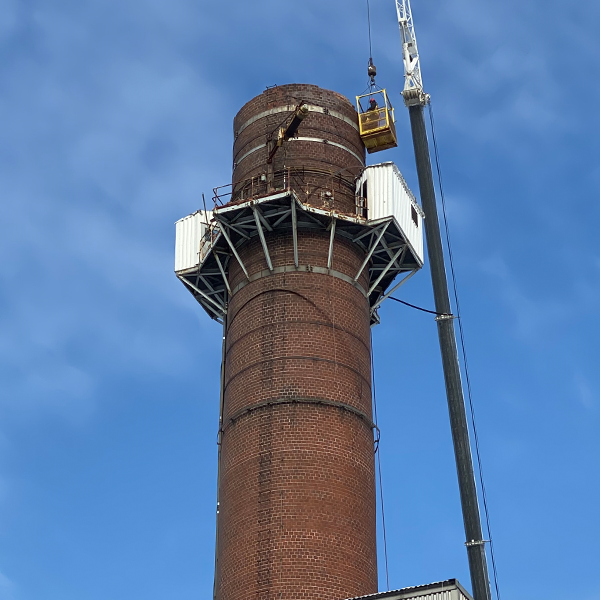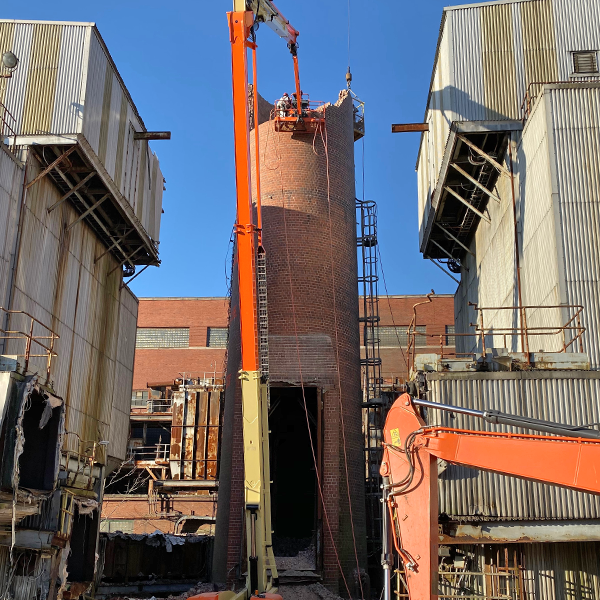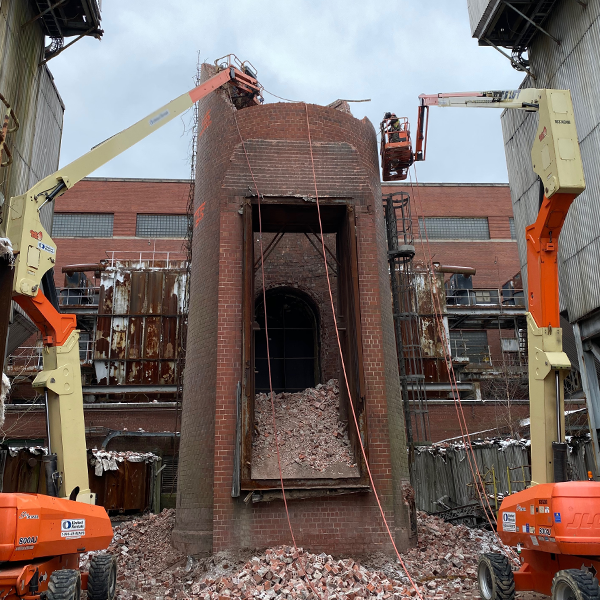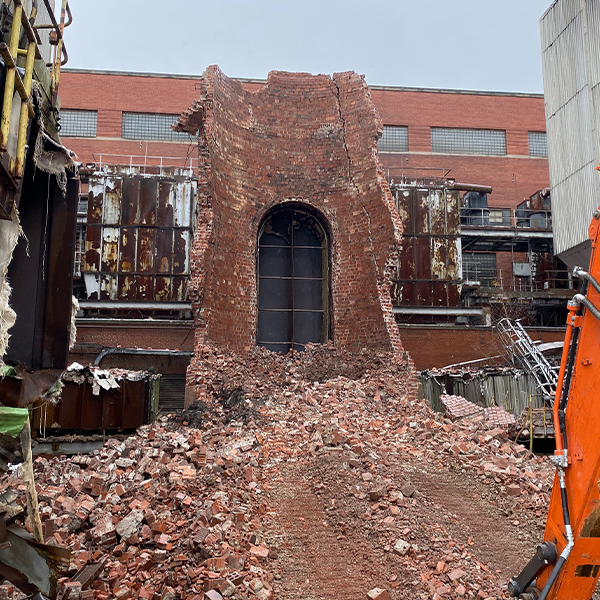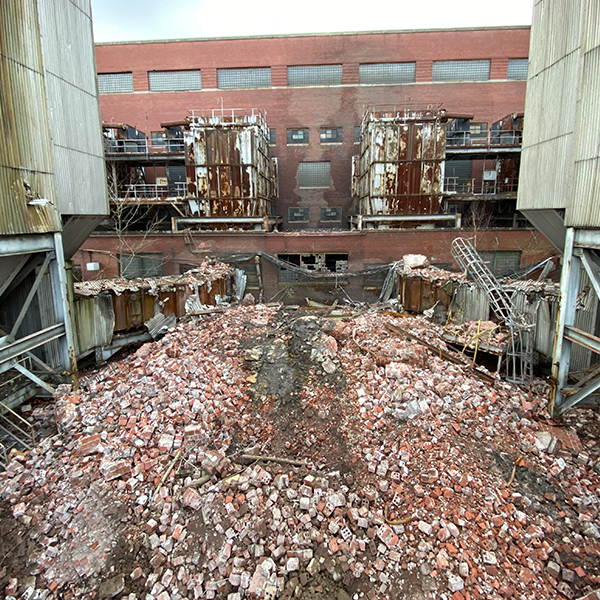The inspection confirmed that a big portion of the chimney’s brickwork has almost or completely failed. The top 20’ of the stack was in the worst condition with large areas of missing bricks, separation between wythes and courses of the brickwork, missing mortar, and severe bulging of stack between steel tension bands. Visual data gathered from the drone revealed anomalies such as multiple large cracks along mortar joints, snapped steel band, oxidation of steel appurtenances, and more. The crumbling brickwork as well as the fallen bricks on the platform and doghouse roof were posing an active falling object hazard around the base of the chimney. This evidence of severe deterioration confirmed that the platform is not safe to use, and that the top section of the stack had reached failure beyond repair.
IA’s team of experienced engineers and technicians determined that the top of the chimney and the existing platform could no longer be repaired and thus should be demolished to mitigate the safety hazards. Meanwhile, the remainder of the chimney could potentially be salvaged with extensive costly repairs on brickwork, mortar joints, and steel bands; however, both IA and the client agreed that the most sensible long-term solution was to demolish the chimney to its entirety. Several months later, IA mobilized on-site to carry out the demolition.
During demolition service mobilization, the site was prepared by clearing the area off of vegetation and large debris, barricading the area and setting up safety rigging and devices in accordance with appropriate regulations. The breeching ducts were partially dismantled for demolished brick removal access. Demolition began by first carefully removing top bricks in small sections using a handheld hammer and electric or pneumatic demolition hammers. The bricks were then dropped down the interior of the chimney. Steel bands were cut off, existing doghouse enclosure was removed, so were the platform, ladders, davit, and other appurtenances. IA crew continued pulling bricks apart until the chimney was completely demolished. The brick rubble and metal waste were collected for disposal. Before leaving the site, IA sealed off the four open breeching ducts with metal plates.



